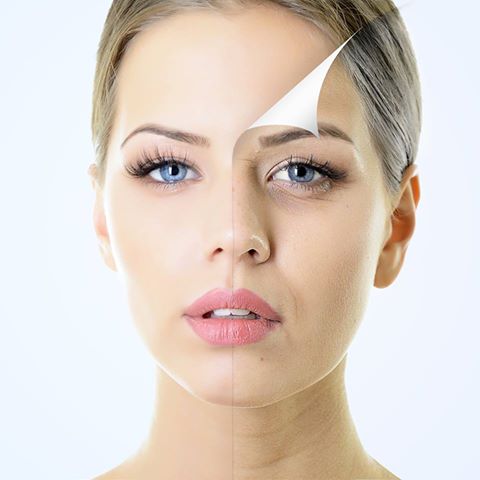A chemical peel is a technique that improves the appearance of the skin on the face, neck or hands. It mostly treats facial skin and enhances the body and scarring. It uses a chemical solution to smooth the texture of your skin by removing the damaged outer layers. The new skin is usually smoother and has less wrinkles than the old skin. The new skin is also temporarily more sensitive to the sun.
There are three basic types of chemical peels
-

Superficial or lunchtime Peel: It uses Alpha-hydroxy acid or another mild acid to penetrate only the outer layer of skin to exfoliate it gently. This treatment improves the appearance of mild skin discoloration and rough skin as well as to refresh the face, neck, chest or hands.
- Medium Peel: Glycolic or trichloroacetic acid is applied to penetrate the out and middle layers of skin to remove damaged skin cells. The treatment improves age spots, fine lines and wrinkles, freckles and moderate skin discoloration and also used to smooth rough skin and treat some precancerous skin growths, i.e. actinic keratosis.
- Deep Peel: Tricholoracetic acid or phenol is applied to deeply penetrate the middle layer of skin to remove damaged skin cells. The treatment removes moderate lines, age spots, freckles and shallow scars. Patients will see a dramatic improvement in their skin appearance. The procedure is only for the face and can be performed once only.
Suitable Candidates for Treatment
Under normal circumstances, the patient’s with white skin and light-colored hair are the best chemical peel, candidates.
An ideal candidate for a chemical peel is in good physical health, understands the procedure, and has realistic expectations of the outcome. You like the results of a chemical peel if your goal is to alleviate acne, smooth wrinkles, improve skin texture, eliminate age spots, or reduce the effects of sun damage. The different types of chemical peel come in varying strengths and also provide more levels of treatment.
Chemical Peel Cost
The cost of chemical peel varies from $150 to $4000 depending upon the type of peel, the condition of your skin, and on other factors, and one geographic area to another.
Chemical Peel Procedure
Some aspects of the chemical peel procedure depend on the kind of skin (light, medium, or dark). However, all skin peel procedures follow the same basic protocols:
At the time of deep chemical peeling, the patient is given a sedative to relax. Then the doctor purifies the patient’s skin, and the local anesthetic helps in treating the affected area. The doctor then uses a chemical peeling solution. This solution is formulated according to each patient’s specific needs and goals. Generally, patients feel a tingling or stinging sensation after the application.
Administration, of a soothing ointment after washing the solution. Most often use of petroleum jelly comes after the deep chemical peel. The doctor then instructs the patient on aftercare, and may also prescribe a mild pain reliever for discomfort after the procedure.
The requirement of multiple treatments depends on the patient’s skin condition and the depth of the chemical peel.
It also helps improve:
- Scars
- Freckles
- Acne or Acne scar
- Age and liver spots
- Sun-damaged skin
- Fine lines and wrinkles
- Irregular Skin Pigmentation
- Rough skin and scaly patches





